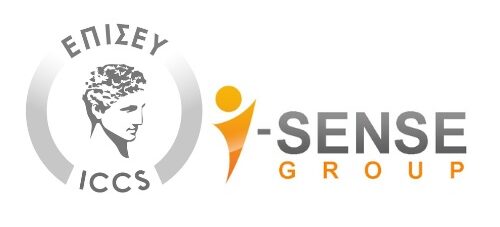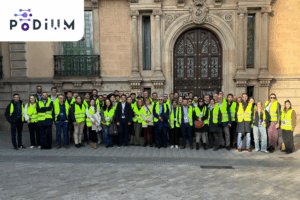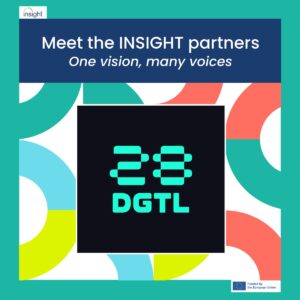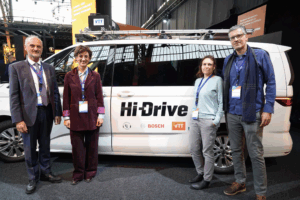In an era where disasters and crises increasingly affect societies with growing intensity and complexity, the need to enhance citizen safety is more pressing than ever. The provision of advanced care and health services, which can only be assured by modern technologies and sophisticated civil protection systems, has become essential for effectively addressing these situations.
At a critical moment for first aid services, researchers from the ISENSE Group of the Institute for Communication and Computer Systems (ICCS) at the National Technical University of Athens (NTUA) contribute by offering modern technological solutions aimed at revolutionizing the management of mass casualty incidents. Specifically, the team is developing an innovative device and a smart mobile phone application that enable medical and non-medical first aid personnel to improve triage and pre-hospital care processes, while simultaneously providing enhanced situational awareness and improved collaboration between first responders and casualties in crisis situations.
The sorting device and mobile application constitute a low-cost, integrated, and customized system that offers a new paradigm in healthcare during mass casualty incidents. The solution incorporates a combination of bracelets for both casualties and rescuers, which communicate wirelessly with first responders via Bluetooth and NFC using a smartphone equipped with the sorting application. This system allows first responders to convey information such as vital signs measurements, patient identification, and the severity of their health condition.
Sorting Device: An Innovative Portable Solution
The basic version of the sorting device is equipped with accurate and reliable sensors for measuring key health parameters, such as blood pressure, body temperature, heart rate, respiratory rate, oxygen saturation in the blood, and more. Additionally, it incorporates electronic auxiliary systems for storing, processing, and transmitting data, ensuring that information is always available to first responders.
The device is designed to be compact, durable, waterproof, and with long battery life. It also supports QR code recognition for compatibility with existing systems, while its integration with the sorting application allows immediate communication between first responders and patients.
Mobile Application: A Significant Facilitation for First Responders
The mobile application (available for iOS and Android) allows first responders to continuously monitor the patient’s health status, which is updated every 30 seconds, send commands, and organize the provision of care with precision. With the ability to track patient conditions, triage incidents, and organize their transport, users can more effectively manage processes and provide immediate and organized assistance, while all information is transmitted in real-time to the operational control center, even over long distances. The application digitizes traditional triage methods, enhancing them with valuable information for medical staff, and provides crisis management officials with a comprehensive overview of the situation through an easy-to-use and fast interface.
Improved Understanding and Collaboration
This comprehensive innovative solution as a whole enhances collaboration among various response teams, casualties, and crisis management agencies, contributing to the creation of a common operational plan for analyzing the data collected by these technologies and responding to the situation. The system ultimately offers strategic, substantive, and operational guidance, allowing officials to monitor the incident’s development and act promptly and effectively.
The European Project NIGHTINGALE
The aforementioned technologies were developed in the frame of the European project NIGHTINGALE, which aims to develop, test, and validate an innovative and integrated set of tools for emergency medical response [Novel Integrated Toolkit for Emergency Medical Response (NIT-MR)], ensuring enhanced life support before hospital admission and improved triage of victims/patients.
The NIT-MR has already been provided to the aforementioned services and agencies for extensive testing and validation, as well as training through a comprehensive program of training and trials in 5 roundtables, 2 table-top exercises, 1 small-scale exercise in a laboratory environment, and 2 full-scale exercises. The second large-scale exercise (2nd Full Scale Exercise) of the project was recently successfully completed in Savona, Italy, in a realistic but controlled environment through two simulated mass casualty incidents: the consequences of a natural disaster and an explosion. Project partners participated in the exercise alongside a diverse group of volunteers (emergency services, firefighters, police), testing the effectiveness of the project’s technologies in simulated scenarios. Participants used the tools to perform triage and manage mass casualties, providing feedback on the effectiveness of the tools in contributing to the pre-hospital care process and enhancing coordinated response action and the efficiency of the involved parties.
The project lasts for 3 years and 4 months, with 23 partners contributing to its goals. The final demonstration event of the integrated technologies will be held online at the end of the year or early next year.
To stay updated on project news, visit its website at https://www.nightingale-triage.eu/.







